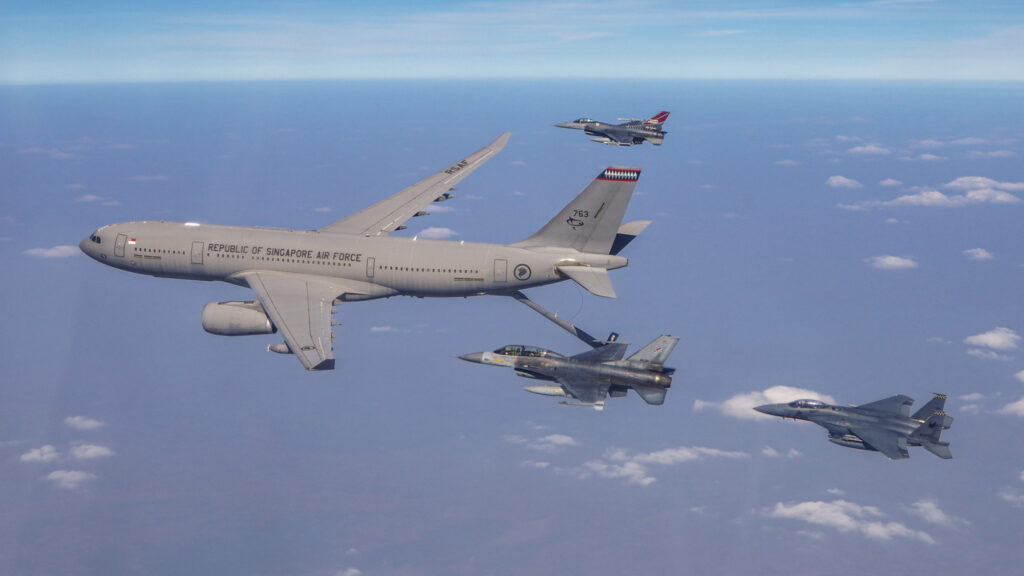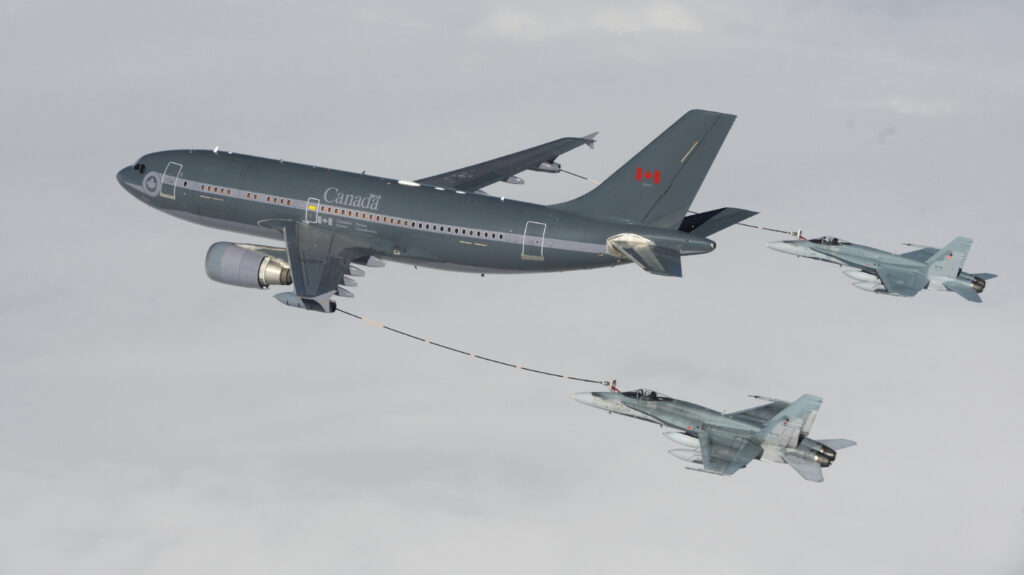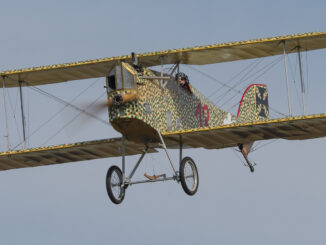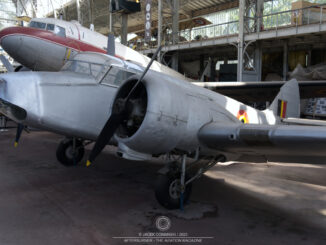 On 25th July 2023, the Government of Canada officially announced that the country awarded Airbus Space and Defence S.A. the contract for nine aircraft within the Canadian Strategic Tanker Transport Capability (STTC) programme.
On 25th July 2023, the Government of Canada officially announced that the country awarded Airbus Space and Defence S.A. the contract for nine aircraft within the Canadian Strategic Tanker Transport Capability (STTC) programme.
The contract with Airbus is valued at approximately 3.6 billion CAD and includes four new Airbus A330 Multi Role Tanker Transport (MRTT) aircraft, as well as additional conversion of five used A330-200 jets.
The governmental announcement also disclosed that Canadian MRTT aeroplanes will be designated CC-330 Husky. The new name is closely related to official mascot of No. 437 (Transport) Squadron of the RCAF. Since 1944, the husky dog is an official symbol of the Squadron´s spirit.
The Royal Canadian Air Force is currently operating a fleet of five CC-150 Polaris aircraft. They are long-range multi-purpose aeroplanes with mid-air refuelling capability, made on basis of Airbus A310-300 airliners.
Since 1992, the Canadian CC-150s provides air-to-air refuelling for the RCAF and its partners, perform cargo and personnel airlift tasks. They were also used for aeromedical evacuations and governmental strategic transport duties. Nevertheless, the fleet of Polaris aircraft is slowly coming to the end of its service life. Therefore, at the end of 2010s, the Canadian government decided to launch the STTC project aimed for acquiring a new fleet of aircraft to replace the CC-150.

In 2018, the STTC programme entered its options analysis phase and then, in April of 2021, the name of qualified supplier – the Airbus company – was officially published. The Canadian authorities expect the STTC aircraft to receive their Initial Operational Capability in 2028-2029, with Final Operational Capability planned for 2030-2031.
Modernization of the Canadian air tankers fleet is part of the country´s investment in modernization of North American Aerospace Defense Command (NORAD), announced back in June of 2022. According to the official statement of the Canadian government, that initiative ´will allow the RCAF to enhance Canadian sovereignty operations, including in the Arctic´, as well as ´strengthen Canada’s air-to-air refuelling support to NORAD and allow other STTC assets to support NATO commitments and provide support to fighter training´.
In addition, the CC-330 Husky is expected to enhance the country´s capability to airlift military personnel, therefore increasing Canadian involvement in military operations and training activities around the world. As mentioned in the official announcement, ´the CC-330 Husky aircraft will increase the RCAF’s ability to respond to unexpected operational requirements such as domestic or international emergencies or humanitarian relief missions´.
The new fleet of CC-330 Husky aircraft is expected to stay operational until the 2050s and beyond. In addition, the new contract should contribute over 145 million CAD to the country’s HDP, as well as offer approximately one thousand new jobs for Canadian industry.

Cover photo: A330 Multi Role Tanker Transport of the Republic of Singapore Air Force (illustrative photo).
A Republic of Singapore Air Force A330 Multi Role Tanker Transport leads a formation flight during a training scenario alongside a U.S. Air Force F-16C assigned to the 36th Fighter Squadron, Osan Air Base, Republic of Korea, two RSAF F-15SGs, and a Royal Thai Air Force F-16ADF during Exercise Cope Tiger 23, Korat Royal Thai Air Base, Kingdom of Thailand, March 22, 2023 (US Department of Defense photo, Public Domain)
All photos © U.S. Department of Defence (DoD), used in compliance with Public Domain licence. The appearance of U.S. Department of Defense (DoD) visual information does not imply or constitute DoD endorsement.
Information from the Canadian government newsroom were used.



